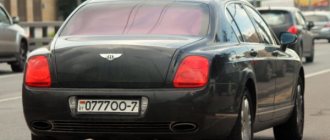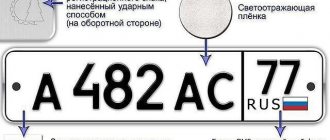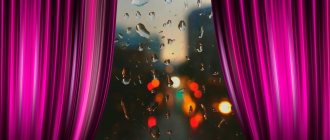LED lamps in PTF - are they legal?
It is possible to answer this question immediately: yes, LED lamps can be installed in fog lights, but only if 2 conditions are met.
- To be able to use it with an LED lamp, the “fog lamp” must be marked in accordance with UN Regulation No. 19,
- The LED bulb itself must comply with UN Regulation No. 128.
Amendments to the UN Regulations to allow LED lamps to be installed in conventional headlights instead of incandescent lamps are still under development for 2021.
Marking foglights for installing LEDs
First, remember that in official documents the abbreviation LED is used for LED lamps - light-emitting diodes. This is the equivalent of the well-known abbreviation LED. And in the documentation in Russian, first of all, look for this abbreviation.
The most interesting thing in UN Regulation No. 19, which sets the requirements for fog lamps, is contained in paragraph 3.5.2, which talks about how the headlight must be marked so that LEDs can be used in it:
The specific identification code includes the initial letters "MD" for "module" followed by the approval marking.
According to the Technical Regulations, it is necessary to check the need to fulfill one more condition.
In order not to dazzle oncoming traffic, any fog lights with light sources of any class with a nominal luminous flux of more than 2000 lumens must be equipped with an automatic headlight leveler.
You will also be interested in:
- Is it possible to install xenon in fog lights?
- Is it possible to install FSO flash headlights for long-range driving? What is the fine and are they deprived of their rights?
- LED lamps LED - can they be installed in headlights?
Types of foglights
According to traffic regulations, the use of fog lights is officially permitted; many manufacturers equip factory-produced cars with fog lights. But many universal types are also produced by third-party companies. By type there are:
- Front fog lights;
- Rear fog lights.
The design features differ in the source of light used. Common types of fog lights:
- Halogen. Relatively inexpensive light sources, in demand among car enthusiasts. The disadvantages include the short service life of the lamps. During intensive use, they require frequent replacement;
- Xenon. The characteristics of the light spectrum are better than those of halogen lamps. They work long enough. The price is quite high;
- LED fog lights. The highest price category. Lamps with excellent light beam. They have a long service life. Lamps are prone to overheating. Requires fairly good ventilation.
What fine or deprivation of rights?
What punishment will follow if an LED bulb is inserted into a fog lamp that does not have the MD marking?
You can’t mix warm with green. Installation of lamps not intended for them in fog lamps is prohibited, since it is impossible to get the headlight to work in fog mode (see below).
Punishment for the illegal installation of LEDs in PTF is provided for in Part 3 of Article 12.5 of the Code of Administrative Offenses - deprivation of the right to drive vehicles for a period of 6 months to a year with confiscation of LED lamps.
There is no prohibition of exploitation with the removal of numbers. This security measure has long been abolished.
Why such a harsh punishment?
Our citizens overwhelmingly learn what they think about from television. And there is a well-established opinion that the most serious offense is driving while intoxicated. In fact, the most serious offense is related to blindness.
Judge for yourself!
- The level of alcohol in the driver's blood up to 0.8 g/l actually has no effect on the number of accidents.
- When alcohol levels exceed 0.8 g/l, a sharp increase in road accidents is observed. This is due to the fact that a drunk driver’s reaction time increases.
As a result, we have: where a sober driver needs one second to react to danger, make a decision and take measures to avoid it, a drunk driver needs 2, 3 and even more seconds.
For the average driver, the time to restore vision after being blinded is at least 3 seconds. Complete adaptation of vision to darkness takes at least 8 seconds. For 10% of drivers, it takes 60 to 120 seconds to fully adapt after being blinded. Compare the reaction time of a drunk driver with the adaptation time. The conclusion is obvious. If you have inserted a light source into your fog lamp that is not intended for it, you can assume that a crowd of drunk drivers is driving towards you.
If the driver does not initially understand the threat of using LED lamps in fog lights under conventional incandescent lamps and why they cannot be installed in 2021, then let him walk and think about it for six months, perhaps he will realize that the law is for these six months saved him from real big troubles with his health and property.
DIY Guide
So, if you decide to make fog lights with LEDs with your own hands, then it is quite possible to perform such an operation at home. It is important to accurately follow all the steps described in the instructions below so that the fog lights last a long time and reliably. To do everything yourself, first prepare all the necessary tools.
Tools and materials
To make diode PTFs with your own hands you will need:
- directly standard optics;
- soldering iron with consumables;
- small screws;
- LED elements themselves with wiring.
Standard optics
Soldering iron with consumables
Self-tapping screws
Light-emitting diode
Algorithm of actions
How to do everything correctly with your own hands?
To make it correctly, follow these steps:
- To begin, dismantle the existing fog lights or take new ones that you purchased at the store. The essence of the method is to clean the optics with your own hands from what has accumulated inside it. This could be dirt, dust, other debris or corrosion. If rust appears on the internal elements of the optics, treat the headlight with your own hands using sandpaper. You need to manually adjust the dimensions of the optics to fit certain LED elements.
- The next step will be to assemble a cooling system for the headlight with your own hands; if necessary, you also need to take care of the driver. As for cooling radiators, you can build them yourself; for these purposes you can use metal pieces or sheets, the thickness of which should be from 2 to 5 mm.
- After arranging the cooling system with your own hands, you need to install the LED lamps themselves directly to the optics. These lights are subsequently connected to the vehicle's wiring. As for the connection, it would be better to connect the fog lights to the battery and bring a separate switch for them into the car interior. It is also advisable to protect the circuit itself with a fuse. It is not advisable to connect fog lights to side lights or low beams, since in this case the service life of the diodes will be significantly reduced. As for the scheme itself, we will not discuss it, since this issue is individual for each car.
1. Remove the PTF and clean it from the inside.
2. Install the LED and connect the wiring.
3. Place the finished headlight in the bumper.
We recommend: What is air recirculation in the car interior
In general, manufacturers offer consumers a huge range of fog lights and LED lamps in particular. You only need to decide on the quality, since there are no good diodes at low prices.
How to avoid deprivation?
Between the layer of fog and the surface of the earth there is always a layer of clean air. The task of fog lights is to shine under the fog. No more than 3% of the light should go upward. If there is a discrepancy in the headlight + lamp system, then part of the light from the fog lamp will go up into the fog and return to your eyes in the form of a veil. That is, PTFs will lose the meaning of installing them on a car.
If you have changed conventional lamps to LED ones, and it seems to you that the beam of light from the fog lights has not changed, then you can drive without problems. Just don’t forget to register changes to the design of the car with the traffic police, objectively confirming that your experiments are safe for others, and no more than 3% of the light goes up from the PTF luminous flux.
If you missed the time and caught the eye of the inspector, you can still try to avoid deprivation of your rights.
- First of all, the traffic police inspector must see the headlight markings. But getting to fog lights with installed LEDs or halogens is very, very difficult, and sometimes even impossible on the road. So that they shine under the fog, they are installed as low as possible - in the bumper.
- Secondly, you need to remove the light bulb from the headlight and make sure that it does not correspond to the marking. As a rule, to disassemble a PTF, at a minimum, you need a screwdriver and knowledge of which bolts to unscrew in which direction.
- And thirdly, the work must still be carried out by a specialist in an equipped place, and the work must be paid for from the budget.
In other words, have a heart-to-heart conversation with the inspector, where, on the one hand, you can even repent, and on the other, hint at problems with establishing the event of an offense. And give your word of honor that replace the light bulbs as quickly as possible, since we are talking about your own safety. End the conversation by comparing blindness with intoxication, emphasizing the understanding of the depth of the problem, and that this should not be done.
Something else useful for you:
- All about the fine for low beam: what size is it if the headlights are not turned on or do not work?
- Is driving with curtains Trokot, Esko, Laitovo and others allowed and what are the dangers?
- Is it possible to install eyelashes and DRLs on headlights according to traffic regulations and what is the fine for this?
Using fog lights as daytime running lights
In the article we will look at the legal norms put forward for equipping vehicles with this type of headlights, and learn about their design features and structure. Based on the information provided, you will be able to correctly select the kit that is suitable for your car and learn how to connect it yourself.
The history of the development of automobile headlights is inextricably linked with the history of the automotive industry and dates back to the first decades of the twentieth century. The desire to use a car at night and experience a minimum of discomfort when moving in bad weather pushed electrical engineers to create and improve electric car lamps and all the units necessary for their operation.
Fog lights were first included in the factory equipment of the Cadillac V16 90 series in 1938, although they have been used by car enthusiasts as auxiliary lighting since the late twenties.
These days, this type of headlight performs the following functions:
- provides direct illumination of the road surface, as well as the side of the road in conditions of poor or limited visibility;
- used as a means of improving vehicle identification by other road users;
- serves as an alternative to daytime running lights - fog lights are used as an economical, gentle method of improving the visibility of moving vehicles during the day;
- acts as an element of auto tuning, the purpose of which is to visually change the car without focusing on the use of fog lights for their intended purpose.
Legal standards for the use of fog lights in the Russian Federation
Unlike, for example, the UK, in the Russian Federation legislation allows the use of fog lights, but imposes the following restrictions:
- the lens of the device should emit selective yellow or milky white light;
- Only paired installation of directional light sources with lamps of the same type is allowed;
- devices should be installed below or at the level of low beam headlights, provided that the distance between the headlight and the ground is more than 250 millimeters;
- the separation from the vehicle dimensions should be within 400 millimeters;
- connecting this type of headlights should allow the driver to turn them on and off regardless of the standard lighting equipment;
- The lighting angle cannot go beyond the range from +15° to -10° vertically and from +45° to -10° horizontally, and must also exclude the possibility of blinding the driver of an oncoming car.
If you plan to use fog lights as daytime running lights, pay attention to additional requirements:
- the installation distance between lamps for cars up to 1.3 meters wide must be at least 400 millimeters, for all others - from 600 millimeters;
- Daytime running lights should automatically turn off when switching to standard light.
Types and types of fog lights
Headlights used to replace failed standard devices or upgrades are most often produced for a specific car model and are equipped with a mount and housing identical to the original one.
Non-standard fog lights often have universal mounts that allow them to be installed as a canopy on the bumper, behind the radiator grille, or instead of plugs on the bumper, if the new car does not have fog lights included in the package.
Fog lights are classified mainly by type of lamp.
- Halogen headlights are the most affordable option for most motorists. Due to the low life of lamps, they have to be changed more often than those designed according to a different principle. So it would be useful to make sure that the lamp is easy to replace.
- Headlights based on xenon lamps are more expensive, but have better characteristics in terms of duration of use and efficiency of illuminating the road in fog.
- LED fog lights are economical and durable, but they are also expensive. In addition, their improper installation or insufficient ventilation leads to overheating and, as a result, a reduction in service life.
Materials used in the manufacture of cases
The case material is often tied to the geography of the manufacturer. Chinese “no-name” headlights are often made of fragile plastic that cannot withstand the operating conditions on our roads. At the same time, self-respecting brands from the Middle Kingdom use aluminum for casting cases.
European brands prioritize reliability, quality and technology. In particular, Hella fog lamp housings are made of magnesium alloys.
Brands originating from the CIS mainly either use VAZ’s developments or copy other people’s ideas. Accordingly, headlight housings are made from all available materials.
We recommend: Startvolt Generator Connection Diagrams
Diffuser design
When choosing a headlight with a glass lens, make sure the glass is thick enough and the headlight is designed to allow replacement.
9 conditions for choosing wisely headlights against fog and bad weather
When choosing universal fog lights, follow these instructions:
- give preference to flashlights with a durable casing made of material that is resistant to mechanical damage and temperature effects, with the ability to cover the glass with plugs;
- when turned on, the headlights should produce a wide beam of light with a clear upper boundary;
- The color of the lens is a matter of your personal preference, the main thing is that it is made of thick, durable glass;
- the aerodynamic shape of the body and glass will avoid the occurrence of additional noise during operation;
- When buying lensed fog lights for a xenon lamp, pay special attention to their settings so that the light does not blind oncoming drivers;
- All types of lamps may need replacement at one time, so choose a headlight that allows you to change a burnt-out lamp with minimal time without having to disassemble half the car;
- pay attention to the reliability of the fastenings and the ability to adjust the flashlight vertically and horizontally for accurate and reliable settings;
- the design of the headlights should fit organically into the exterior of the car without attracting undue attention;
- remember that excessive lamp power will negatively affect the resources of the generator and wiring, so the optimal choice is lamps with a power of up to 55 W.
Famous manufacturers include in the kit a wiring diagram for fog lights, as well as everything necessary for switching.
If you intend to use the headlights for their intended purpose, and not as an element of car tuning, take the purchase as seriously as possible, remembering that you are purchasing a device that increases the safety of using the vehicle.
Before you start choosing a specific manufacturer and model, decide on the mounting method and typical use scenario.
How to properly connect lights?
If the installation of headlights is carried out for a car with a basic configuration that allows for such installation, find headlights recommended by the manufacturer or their equivalent, look for a wiring diagram for your car.
In the case of tuning or replacing a damaged fog light, the main difficulties arise at the stage of dismantling the old device. You can solve them by finding information about the mounting diagram on the Internet or by contacting a car repair shop. Otherwise, there should be no difficulties when using original spare parts.
Installing lights on old cars of domestic and foreign production will require you to have experience working with auto electricians at the level of installing a car radio yourself. For VAZs, Volgas and Muscovites, the scheme used in later Zhiguli models is suitable.
For installation you will need:
- a set of headlights you like; depending on their configuration, the further list can be shortened or supplemented;
- a standard set of tools - you will also need it to replace the fog lamp;
- relay complete with block and connecting wires;
- additional 15A wire fuse;
- 6-10 meters of two-core power cable with a cross-section of at least 1.5 mm² (if not included in the headlight delivery package);
- a set of female/male terminals, as well as for body ground;
- cable ties;
- headlight switch button (it is recommended to take one with backlight).
Ready-made kits can be purchased at radio markets or car dealerships.
Let's proceed directly to installation:
- remove the terminals from the battery in accordance with safety regulations;
- if there is a reserved space on the dashboard for a button to turn on the fog lights, remove the plug and fix the button in its place;
- dismantle the torpedo panel (for this you will need a lamp indicating the operation of the stove) - trace the wires feeding it to the two-pin connector, connect the contact with the relay to it;
- connect the second wire coming from the relay to the button; from the free terminal we run a wire to the 85th connector of the relay - we get a circuit that powers the button from the relay;
- we attach the relay in a suitable place under the dashboard;
- we pull the wire from pin 87 to the battery in an accessible way, not forgetting that it will need an additional 15A fuse, located as close as possible to the power source;
- We connect the 86th contact to the housing;
- we combine the minuses coming from the headlights and attach them to the body;
- we collect the positives into a bundle and send them to the 30th terminal of the relay;
- return power to the battery and enjoy a job well done!











